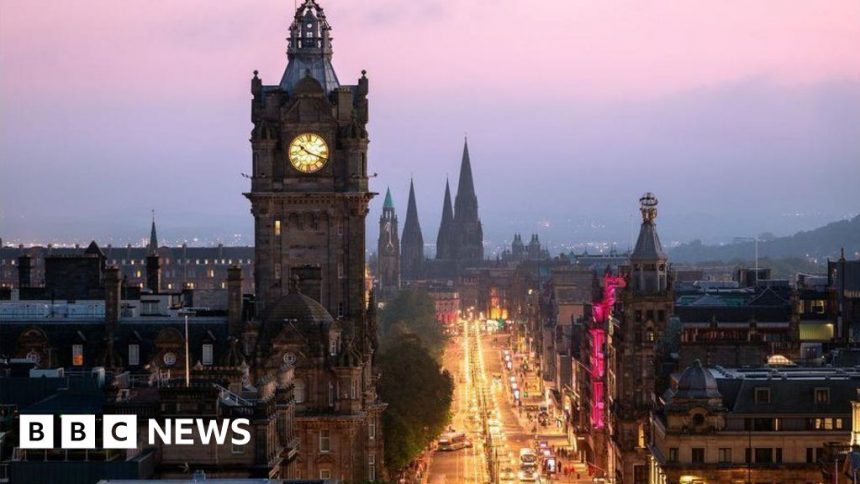When the clocks go back, this landmark will still be wrong
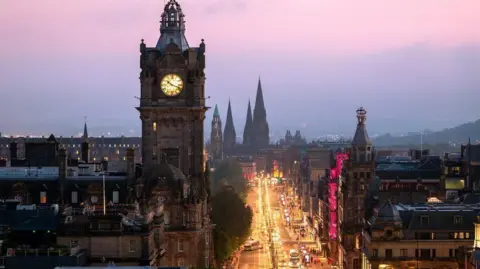 Joe Daniel Price/Getty Images
Joe Daniel Price/Getty ImagesAs people across the UK roll their clocks back to GMT on Sunday, there’s one well-loved Scottish clock that will remain at the wrong time.
Ever since the Balmoral Hotel clock tower was built in Edinburgh 122 years ago, its time has deliberately been set fast.
The peculiar tradition began after intervention by railway officials at Edinburgh Waverley Station, below the clock tower.
In the era before mobile phones, when watches were expensive, the clock was well-used by train passengers to watch their time.
Officials thought three extra minutes would give travellers more time to collect their tickets, reach their carriages and unload their luggage before the whistle blew.
It has been set three minutes fast ever since.
Brian Duncan, chief engineer of the Balmoral Hotel, said the tradition would endure.
At 02:00 the clock will be stopped for an hour, and set running again the usual three minutes ahead of time.
“Passersby don’t seem to notice as we’ve never had a complaint about the time being wrong during that hour,” he told BBC Scotland.
“I think it’s because it’s happening in the middle of the night.”
The Scottish Baronial-style clock tower was manually changed for daylight savings before it was automated in 2014 – just a few months after Brian took the job of looking after the clock.
The change was prompted after it stopped three times over a six week period.
Brian said one of the hundreds of cogs inside the original mechanism was slipping.
“I had to make a very big decision – do we continue with the clock being faulty or do we go for a small gear box controlled by a computer,” he said.
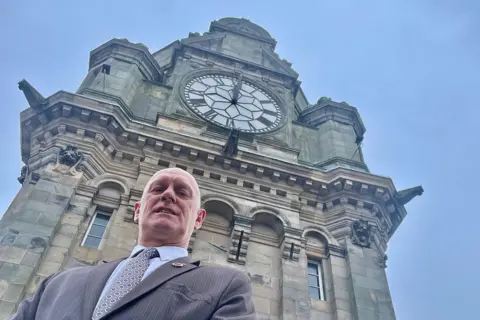
“We now have a very small gear box compared to the original mechanism and a computer controls it.”
So Brian will be sleeping in his bed when the clocks change.
The hands on the four faces of the clock tower cannot be wound, so instead the clock is stopped for one hour in autumn and for 11 hours when the clocks go forward in the spring.
“It’s always a Saturday night, so people on Princes Street at that time have usually had a few drinks so no-one really notices,” he said.
The only day the clock tells the true time is during the countdown to the midnight bells during Edinburgh’s big Hogmanay celebrations on 31 December.
The hotel pays for specialists from Smith of Derby to change the time for just one day to see in the New Year. Then it is set three minutes fast again.
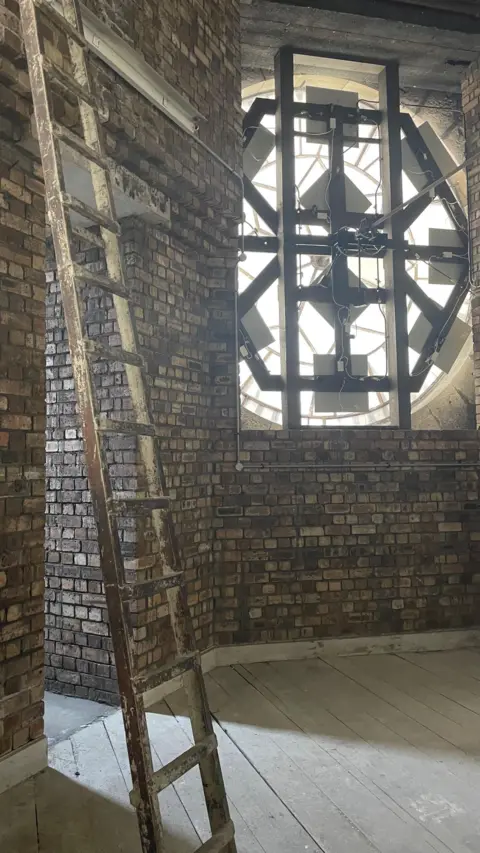
The 62-year-old also explained how the clock keeps its time during the year despite the forces of gravity on the minute hand.
“I was told the weight of gravity makes it faster for the first 30 seconds but then gravity makes it slower on the way back up so it equals out,” he said.
The last time the clock broke down was for more than a month in the summer of 2020 during the Covid lockdown.
He now always looks up at it in the morning from his tram journey to work to make sure it is still working.
The clock tower, which was designed by William Hamilton Beattie, rises 190ft (58m) into the capital’s skyline.
The original mechanism, although not used any more, is still in the clock tower.
Brian said he hopes one day to have it moved into a more public area of the hotel so visitors can see it.
“It’s a massive operation to take it out of the clock tower due to its sheer weight. It’s made of steel and weighs at least half a ton.”
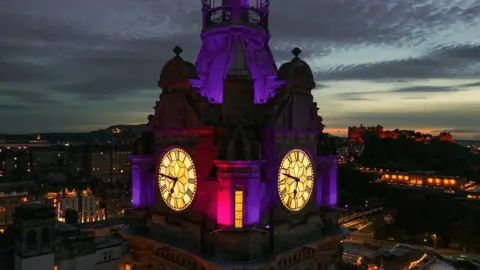 Guven Ozdemir/Getty Images
Guven Ozdemir/Getty ImagesThe Balmoral is the second most famous clock in the UK after Big Ben.
“I love the clock and I’m very proud to be in charge of looking after it,” said Brian.
“It’s quite an achievement to be the chief engineer of such a clock.
“And it gives me a wee bit of excitement when I look up at it, it’s beautiful.”
The Balmoral Hotel is itself a landmark in Edinburgh. It opened originally as the North British Station Hotel.
It was re-named the Balmoral – a name derived from Gaelic which means “majestic dwelling” – in June 1991, in a ceremony led by actor Sir Sean Connery.
Since then it has hosted many celebrities, including JK Rowling, who finished the last book in her Harry Potter series in one of the hotel’s suites.



